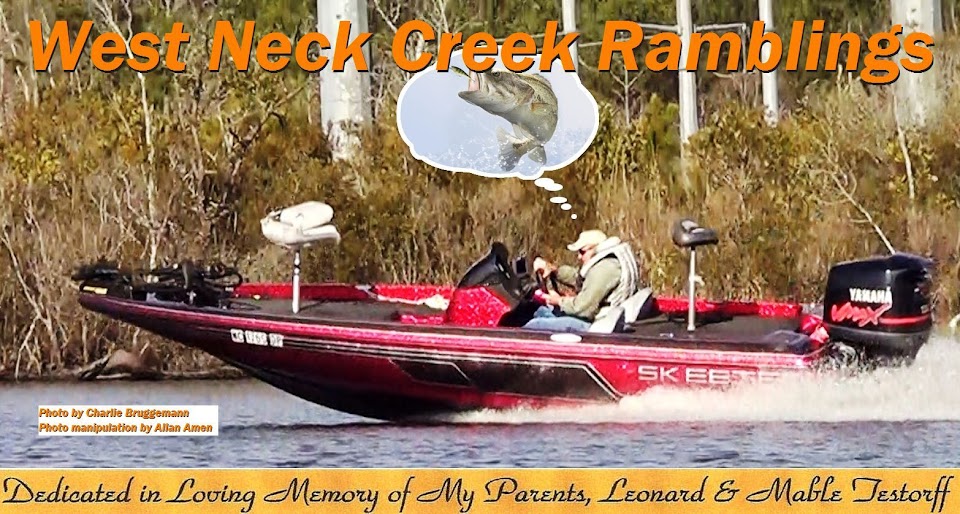As I learned yesterday, while engaged in some dock talk, Mountain Dew soda pop provides a lot more than a thirst-quenching refreshment for anglers. It also offers healing powers for fish that have been gill-hooked.
Said the fellow angler I was talking to, "I had such a fish in the livewell that already was belly up and barely breathing. I introduced a small amount of Mountain Dew on the injured gills through its mouth, and in no time, the fish was bouncing around in the livewell as if nothing ever had happened."
A subsequent Google search revealed that introduction of a soft drink with some citric acid (e.g., Mountain Dew, Sprite, Mellow Yellow, 7Up) indeed appears to back up what my friend had told me earlier. "Once a fish begins to bleed from the gills or gullet, pour the soda on the affected area," noted one writer. "The acid in the soda will make the capillaries shrink and reduce or stop the hemorrhaging entirely."
While pouring a soft drink may well stop a fish bleeding from the gills, there are those who contend that "it's a better strategy simply to put your fish back in the water--or a healing tank--and let it heal naturally." The only problem with this advice, however--as I see it--is that just putting your fish back in the water doesn't always work. In fact, more times than not, it doesn't work...and that's based on a number of personal experiences over the years.
Check out this video link and draw your own preliminary conclusions: https://www.youtube.com/watch?v=0g9sN1J6Yu8. You also might like to consider the following information, which I gleaned from an April 2019, Wired2Fish article that was written by fisheries biologist Steve Bardin. He conducted a study of the subject matter.
Bardin began by noting that gills are made of three main parts: The
arch, which is the central structure of the gill, the
rakers, which are positioned under the arch and protect the gill, and the
filament, which is the red-colored part where blood actually flows
against the water that enters the mouth. This process is how fish pull oxygen from the water and release waste, such as ammonia...which, ideally, should stop any bleeding of the gill fairly quickly.
The fisheries biologist designed his experiment, using three 10-fish treatment groups. All 30 fish were captured, using electrofishing and measured between 12 and 14 inches. All 30 fish were sedated and randomly assigned a treatment group.
For group "A", Bardin used a hook to create a laceration in the area where the gill arch meets filaments and applied
no soda. For group "B", he used the same procedure to create a laceration, then
applied soda to the gill until the bleeding appeared to stop. Group "C" was the
control group, which were sedated but had their gills untreated.
Groups "A" and "B" were marked with a unique fin clip to denote their treatment type, and then all 30 fish were released into a .20-acre hatchery pond that had been stocked with forage fish but no other predatory fish.
He used angling success to determine recovery. At 24 hours post-treatment, angling began in small 15-to-30-minute attempts to measure fish recovery, based on successful recapture. Once recaptured, each fish was removed from the study, and images were taken of the gill filament.
Following laceration of the gill of treatment group "B" fish, soda was an effective method to stop bleeding. This was achieved, using low volumes of soda. For the 10 treatment fish, a total of 30 ounces of soda was used. Some lacerations did take two pouring attempts to completely stop bleeding. Interestingly enough, although sedated, every fish had a muscular reaction to the soda application. All fish released recovered from sedation, except one treatment "B" fish (soda), which died.
On day one, following the treatment, one group "A" fish (no soda) was captured via angling. The gill filament of this fish showed
slight discoloration in the immediate area where the laceration occurred but appeared healthy in all other ways.
On day two, at 48 hours post-treatment, four fish were captured via angling--two from group "A" (no soda) and two from group "B" (soda). None of these four fish had discoloration in gill filament around the laceration area.
Fish were recovered in both treatment groups "A" (no soda) and "B" (soda) on days three, four and five. Day five was the first day a group "C" (control) fish was recaptured. This trend continued over 14 days, as all fish were recovered.
Based on this study and the angling results, Bardin concluded that "the best management practice for an angler who hooks a fish in the gill and causes bleeding is to use pliers to remove the hook and
get that fish back into the water as quickly as possible.
"If, on the other hand, you prefer to use the soda trick, it appears to coagulate the blood and stop the bleeding but does not appear to improve recovery."
However, he also went on to note that he used only a single brand of citrus-flavored soda during the study, adding, "it would be interesting to determine if other brands had similar results." He also pointed out the study was conducted in early spring conditions, when water temperatures were stable between 58 and 65 degrees. At this temperature range, all fish appeared to recover and become catchable again within 24 to 48 hours, regardless of treatment group. "The results likely would be different as water temperatures increased into the summer months," Bardin concluded.
One vocal critic of the soda trick is outdoor writer Spencer Neuharth, who wrote a blog post in 2017, pleading with anglers to stop dousing fish with Mountain Dew. "Not only is this soda theory wrong," he wrote, "but it's potentially bad for fish. The weak acid from pop would (I suggest that he should have said could) throw off the chemistry of the fish."
My bottom-line advice is this: Follow your own convictions. Personally, I'd much rather see a fish swim off from a gill injury, rather than go belly up after I've released it.









































